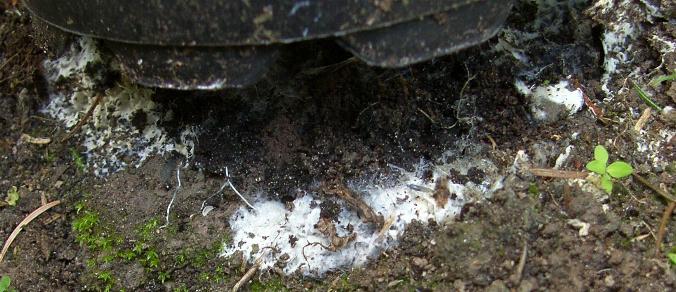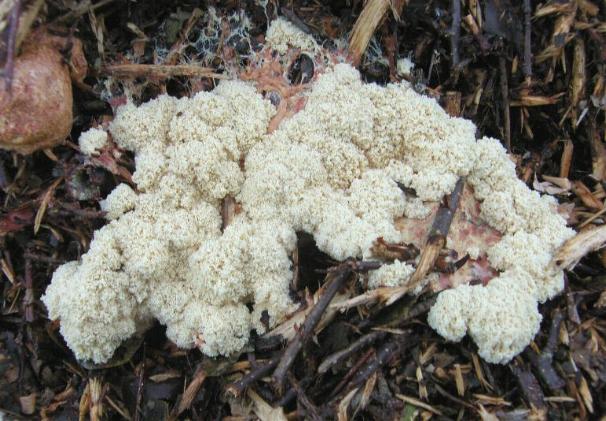Slime Moulds or Slime Fungi, are fascinating organisms which
exhibit characteristics of both animals and fungi, and are
now believed to be the most important rotifers in the
soil. In their feeding or trophic stage, they move
about as a mass of protoplasm
(plasmodium) devouring bacteria, spores and other
organic matter. Research has discovered that the
largest living entity is a slime mould measuring many
miles accross. The individual 'amoebae' live as a
multicellular mass communicating by chemical signals.
As they are neither plants or animals they are classified in a separate Kingdom - the
Protoctista. Many have symbiotic associations with
plants, similar to the Mycorrhizal Fungi.
The pioneering nature filmmaker Percy Smith used slime moulds as the subject of one of his productions, Magic Myxies (1931); one of the earliest such films with sound. The commentary portrayed them in a science-fictional manner, suggesting at some times that they were animals and at others, vegetables. The time-lapse photography showed the mould moving around. The less serious treatment of the subject and shortening of the name was frowned on by the scientific establishment.

A small mass of slime mould underneath a flower pot.
They can often be found as a white or yellow film (the plasmodium) under stones and logs, but the most striking occurrence is on grass or other low-growing plants, during wet periods. Slimey, frothy or powdery, cream-coloured clusters of fruiting bodies, produced when conditions are unfavourable for the mould, smother blades of grass. After releasing their spores they turn grey. The whole clump looks like a patch of scrambled eggs very soft to the touch, something like foam which may look unsightly, but does not appear to harm the grass as it covers it for a short period.

This clump of fruiting bodies was found on a mound of chipped branches which was being composted to use as a mulch.
Brush away or wash off with a hose if necessary. Poor drainage can contribute to their appearance in lawns so spiking should help.
If they return regularly, an application of Mancozeb, Zineb or a copper fungicide should control them, but do remember they could be essential to the health of your soil. (Copper fungicides are to be withdrawn from the UK market by 2013.)
Back to article on Plant Diseases